 |
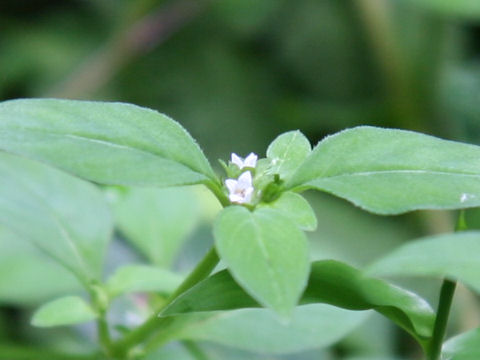

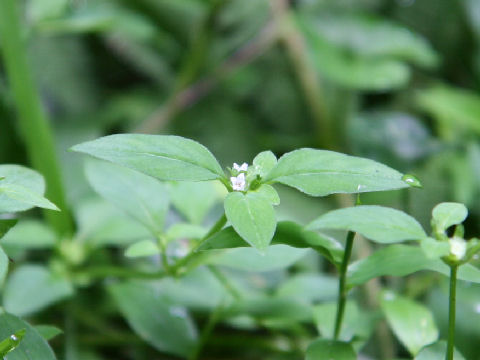



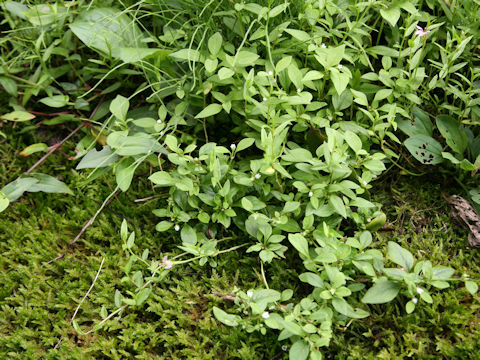

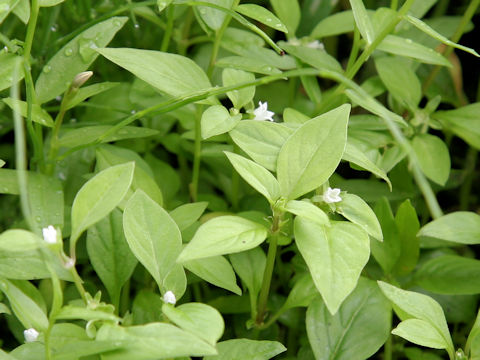

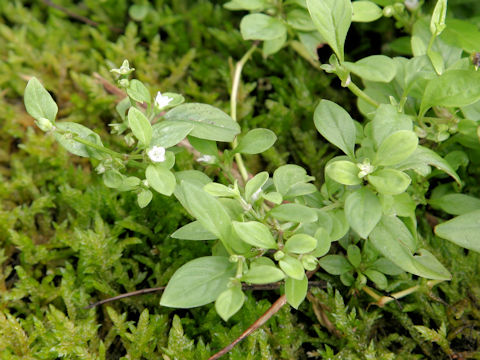

|

|
わが国の本州から四国・九州、それに中国や東南アジアに分布しています。山野の道ばたなどに生え、地面を這って広がります。茎の節から根をだし、先端部は斜上します。葉は卵形から狭卵形で対生し、まばらに軟毛が生えます。8月から9月ごろ、茎頂や葉腋に小さな白色の花を咲かせます。花冠は筒状で先端は4裂します。和名は、葉が乾くと赤褐色に変色し、その様子が麻疹の発疹に見えるということから。台湾華語では「涼喉茶」、中国語では「薄葉新耳草(bao ye xin er cao)」と呼ばれます。
|

|
アカネ科フタバムグラ属の一年草で、学名は Hedyotis lindleyana var. hirsuta (syn. Neanotis hirsuta var. hirsuta)。英名はありません。
|

|
The "Hashika-gusa" (Hedyotis lindleyana var. hirsuta) belongs to Rubiaceae (the Madder family). It is an annual herb that is distributed from Honshu to Shikoku and Kyushu in Japan, as well as China and Southeast Asia. It grows on the roadsides of mountains and crawls on the ground. The roots are taken out from the nodes of the stem, and the tip is slanted. The leaves are ovate to narrow-ovate and opposite, with sparse vellus hair. From August to September, small white flowers come on the stem apex and axils. The corolla is tubular and the tip is split into four. The Japanese name is that when the leaves dry, they turn reddish brown and look like a measles rash. It is called "涼喉茶" in Taiwanese Chinese and "薄葉新耳草" (bao ye xin er cao) in Chinese.
|

|
[上・中1] 大阪府四條畷市逢阪「むろいけ園地」にて、2006年08月31日撮影。
[中2] 同上にて、2006年09月10日撮影。
[中3〜4・下] 山形県小国町小玉川にて、2021年08月15日撮影。
|







